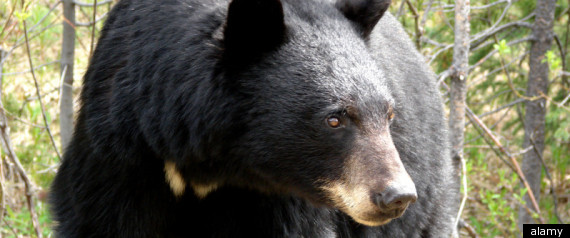 The clash between industry and wildlife in Alberta’s oil sands took a
steep toll on black bears last year, with 145 of the animals killed by
Fish and Wildlife conservation officers.
The clash between industry and wildlife in Alberta’s oil sands took a
steep toll on black bears last year, with 145 of the animals killed by
Fish and Wildlife conservation officers.It was the highest annual cull in recent history. Nearly half of the black bears were shot after they were attracted to oil sands camps in the Fort McMurray region by food and garbage, The Calgary Herald reports. Another 51 were shot on residential properties.
Watch a YouTube video below of a black bear foraging for garbage at the Wapasu Creek Lodge, a big facility that houses workers on projects in the northeast area of the Athabasca oil sands.Alberta Sustainable Resource Development, which manages wildlife in the province, said bear occurrences in the oil sands region nearly doubled from the year prior, when 52 bears were shot, and an official blamed a berry crop failure for the increase.
As The Calgary Herald reports:
Environment and wildlife conservation groups were outraged by the number of black bear killings. They immediately blamed the deaths on lax garbage management and a lack of proper monitoring and regulation by the provincial government. “It’s a very disturbing fact to hear and it’s one more cost of oilsands development that we need to look at,” said Mike Hudema of Greenpeace.The oil sands have long been under fire for how much they contribute to Canada’s greenhouse gas emissions. According to a secret federal memo unearthed through access to information, emissions growth from the oil sands is projected to be greater over the next decade than all other Canadian economic sectors combined.
And a trade war is brewing between Canada and the European Union over a proposal that would effectively ban oil sands bitumen from Europe.
But the problem of wildlife impacts is also getting more attention, with a recent outcry by environmental groups over a government plan to protect woodland caribou populations in the oil sands by poisoning thousands of wolves.
The plan was lambasted by the National Wildlife Federation, the largest conservation organization in the United States, with four million supporters.
Oil sands giant Syncrude Canada was ordered to pay a $3-million penalty for the 2008 deaths of 1,600 ducks in one of its toxic tailings pond, as CBC reported, among the hundreds of birds and waterfowl believed killed in similar facilities.
Original Article
Source: Huff
Author: --
No comments:
Post a Comment